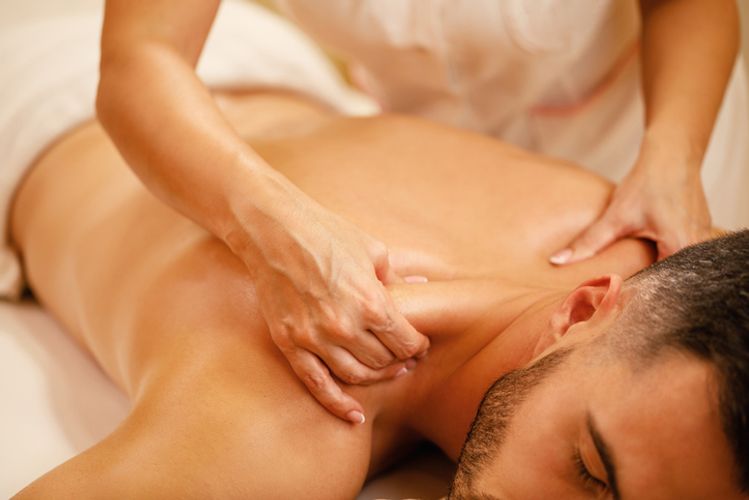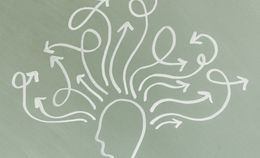Neuromuscular massage therapy, sometimes called trigger point myotherapy, is a specialized, medical massage treatment that engages the nervous system as well as the body's soft tissues. It is usually performed with a therapeutic goal in mind, such as pain relief or rehabilitation following injury, rather than relaxation alone. This approach can also be helpful in injury prevention.
Neuromuscular massage effectively targets the underlying causes of a range of painful and movement-restricting conditions through hands-on manipulation. It is used as a regular therapy to help in pain management and to treat back pain, temporomandibular joint pain (TMJ), plantar fasciitis, migraines, leg cramps, sciatica, and more. Some patients and massage therapists consider it the most effective treatment available for low-back pain.1
Treatment incorporates a variety of techniques but places much of its focus on releasing trigger points - small areas of tightly contracted muscle and fascia (connective tissue).
The neuromuscular massage therapist is a highly trained, creative problem-solver who combines an advanced understanding of body mechanics, postural alignment, anatomy, and physiology with precise application of a variety of manual techniques in order to treat each patient's specific complaints most effectively.2
Science
Neuromuscular massage therapy begins with a nuanced and thorough assessment of a patient's condition to identify underlying causes. Five common contributing factors are evaluated and addressed.3 These include:
Trigger points, small areas of tightly contracted muscle and fascia (connective tissue) that are often very sensitive to touch. These tiny muscle spasms are responsible for local tenderness as well as referral pain and restricted range of motion. They often contribute to broader dysfunctional movement patterns.
Blood flow deficiency, also known as ischemia. Adequate blood supply is needed to carry oxygen and nutrients to the body's tissues and to remove wastes - in other words, to support healthy cellular metabolism.
Nerve compression, i.e. direct pressure placed on a nerve. 'Pinched' or 'trapped' nerves can be caused by herniated spinal discs, bone spur growth, overuse injuries like carpal tunnel syndrome (nerve entrapment in the wrist), and other health conditions. (There are a variety of terms for similar conditions with overlapping symptoms; a precise medical diagnosis will distinguish between peripheral neuropathy and radiculopathy, depending on whether the peripheral nervous system or the nerve root is affected.4)
Distorted posture, usually caused by the long-term repetition of poor sedentary posture or dysfunctional, often compensatory, movement patterns (see below). Acute and repetitive stress injuries from sports, employment, and daily activities can contribute to postural distortions and result in imbalances in the muscular system.
Biomechanical dysfunction, an acquired imbalance in the musculoskeletal system that leads to poor and imbalanced movement habits.
Neuromuscular massage techniques work by releasing trigger points and adhesions (fibrous, bands of internal scar tissue); increasing blood circulation and the delivery of oxygen and nutrients to muscles; supporting the elimination of metabolic waste products like lactic acid, and relieving pressure on compressed and trapped nerves.
Benefits of Neuromuscular Massage
Regular neuromuscular massage therapy helps patients experience less pain and stiffness and greater, more balanced musculoskeletal functionality. Range of motion is restored and tissues are nourished, aiding in recovery. Distorted posture and biomechanical dysfunction are eased as pain and stiffness are reduced. Healthier posture and movement patterns help control underlying sources of pain and discomfort.
Patients suffering from pain, discomfort, restricted movement, and other symptoms of the following conditions may all benefit from neuromuscular massage therapy5:
- Low-back pain
- "Text neck" or other neck pain problems6
- Muscle spasms
- Soft tissue injury, such as muscle strain
- Upper back and shoulder pain
- Tendonitis
- Arthritis
- Carpal tunnel syndrome
- Sciatica
- Muscle cramps in the legs
- Plantar fasciitis
- Knee pain
- Jaw pain
- Temporomandibular joint (TMJ) pain
- Iliotibial band friction syndrome
- Hip pain
- Migraine headaches
- Tension headaches7
What to expect during a session
After a thorough assessment of your complaint, your neuromuscular massage therapist will likely combine several techniques to treat you. These will likely include some or all of the following8:
- Positional release, or the placement of the client in different passive positions, usually at the start of a session, to begin to relieve pain and to help prepare the body to better tolerate manual therapy
- Myofascial release therapy techniques to deactivate trigger points. The therapist will apply sustained pressure using their fingers, knuckles, or elbows, to targeted trigger point locations (usually for 10 to 30 seconds) until tension is released and localized pain abates. This also often helps to alleviate referral pain (pain at remote locations elsewhere in the body), tingling, and numbness.
- Strokes from a variety of massage modalities, including effleurage and petrissage techniques originating in Swedish massage. These help to improve circulation and restore range of motion
- Joint movement, to reduce inflammation and restore range of motion to joints
- Assisted stretching, which is often used in training, injury treatment, and prevention for athletes, for its usefulness in increasing mobility, flexibility, and strength.
The focus on trigger point release in neuromuscular massage means a session typically involves some initial discomfort for patients, since even light pressure on a trigger point is, by definition, painful.
However, many patients with chronic pain conditions find this treatment life-changing for its ability to restore function and alleviate pain. Releasing trigger points may be among the safest and effective options for back pain sufferers.9
Neuromuscular massage therapists and their clients should always place a high value on communication during sessions to ensure the client is never overly uncomfortable during treatment.
The Bottom Line
Neuromuscular massage therapy is a good option for anyone suffering from a wide range of problems of the musculoskeletal system that can cause chronic or acute pain and restricted movement.
While neuromuscular massage is most often used as a therapeutic massage modality, it can be a worthwhile approach for anyone seeking pain relief and better overall musculoskeletal function.
References:
1"Neuromuscular Massage Therapy:"https://www.spine-health.com/wellness/massage-therapy/neuromuscular-massage-therapy
2"The Massage Therapist's Guide to Neuromuscular Therapy":https://www.massagemag.com/guide-to-neuromuscular-therapy-119085/
3"Neuromuscular massage: A Deeper Understanding":https://www.takethemagicstep.com/health-management/neuromuscular-massage-a-deeper-understanding/
4"Radiculopathy":https://www.hopkinsmedicine.org/health/conditions-and-diseases/radiculopathy
5"What is Neuromuscular Massage Therapy?":https://www.aiam.edu/massage-therapy/neuromuscular-massage-therapy/
6"Compression at Myofascial Trigger Point on Chronic Neck Pain Provides Pain Relief through the Prefrontal Cortex and Autonomic Nervous System: A Pilot Study":https://www.ncbi.nlm.nih.gov/pubmed/28442987
7"Characteristics and distributions of myofascial trigger points in individuals with chronic tension-type headaches":https://www.ncbi.nlm.nih.gov/pubmed/31037000
8"The Massage Therapist's Guide to Neuromuscular Therapy":https://www.massagemag.com/guide-to-neuromuscular-therapy-119085/
9"Back Pain & Trigger Points":https://www.painscience.com/tutorials/back-pain-and-trigger-points.php





















